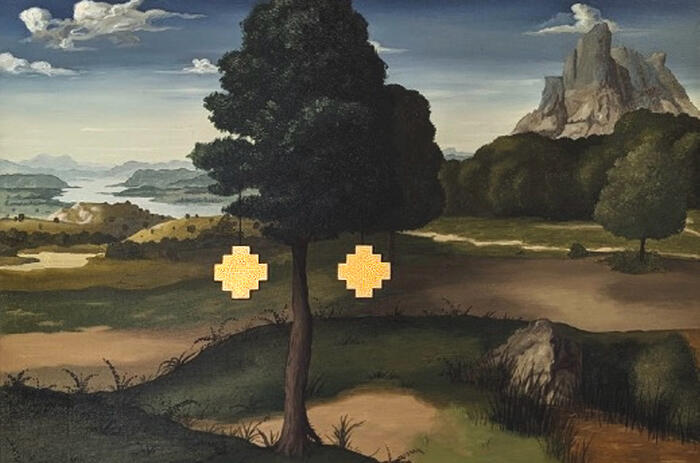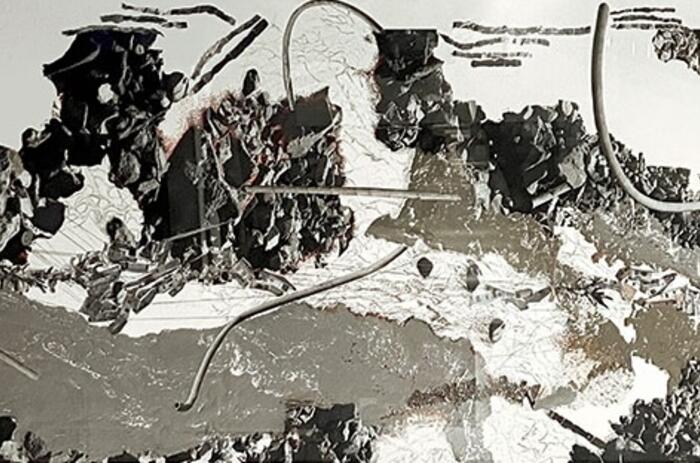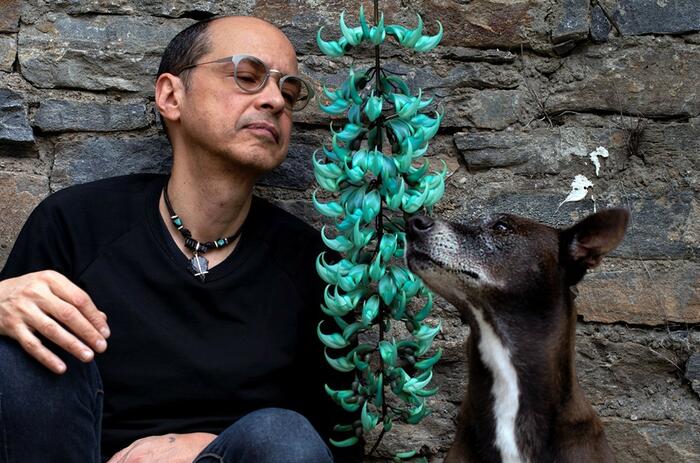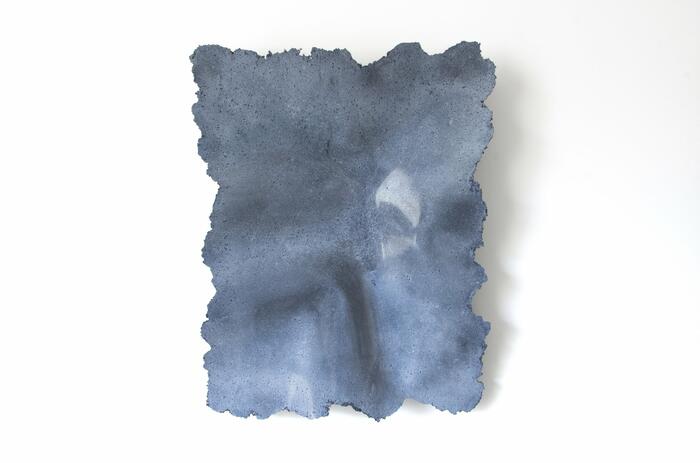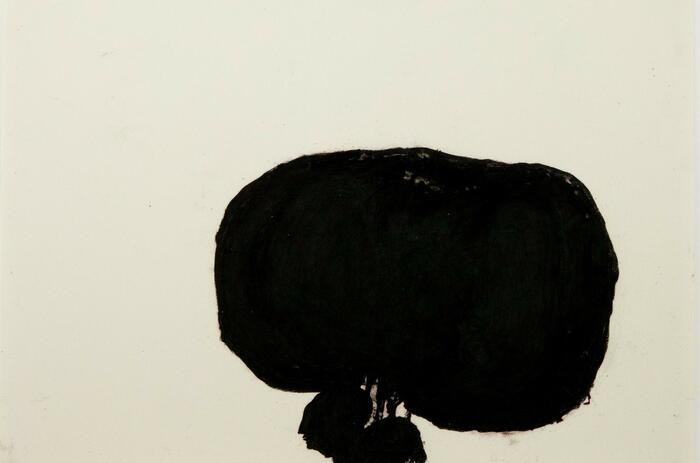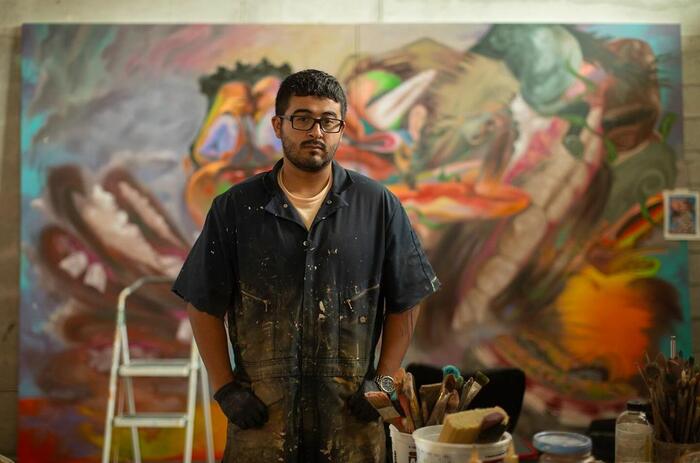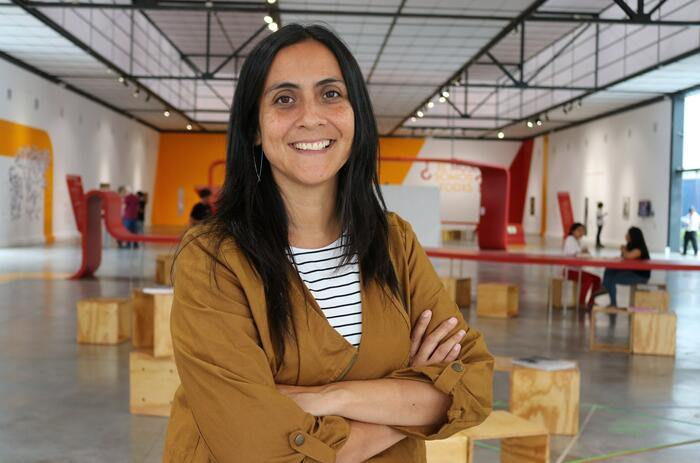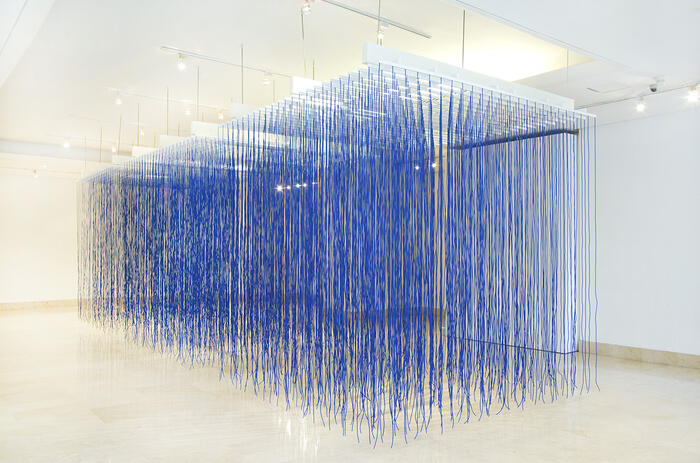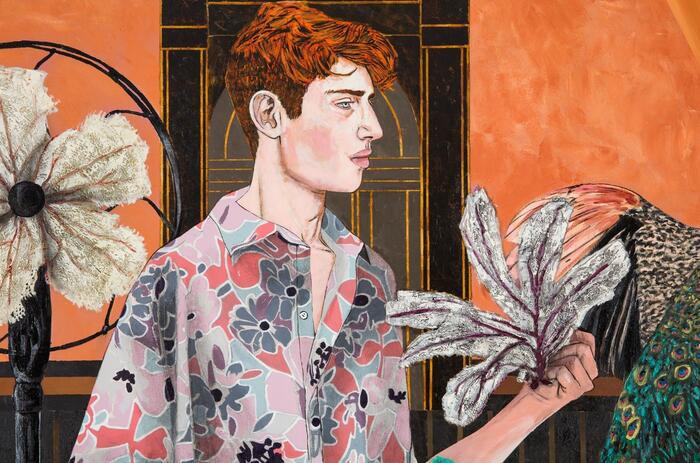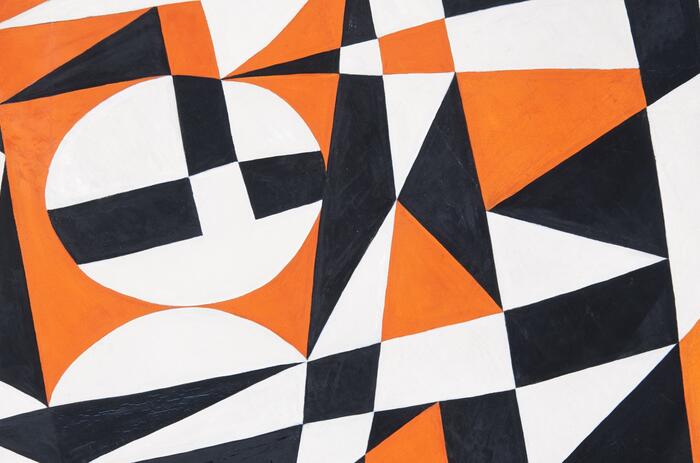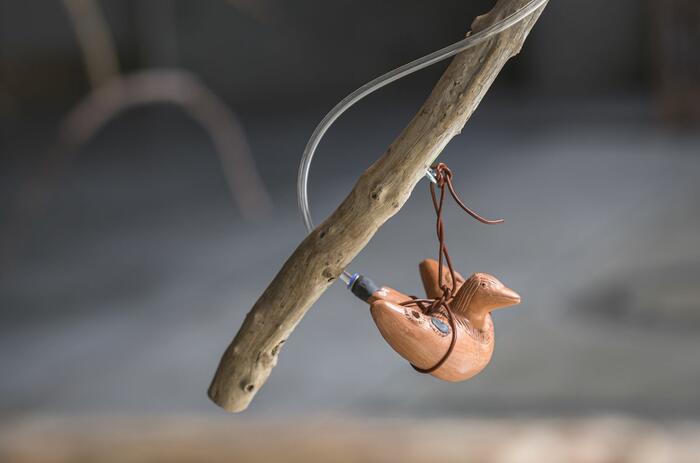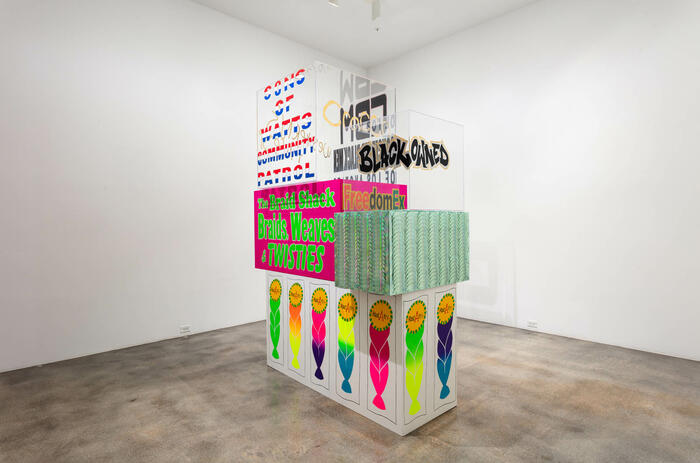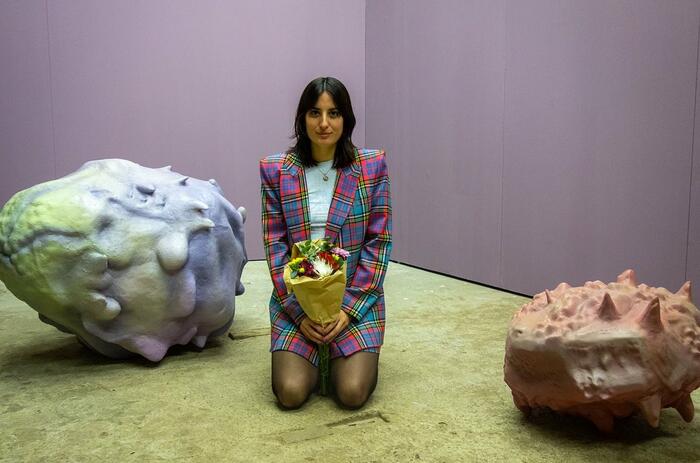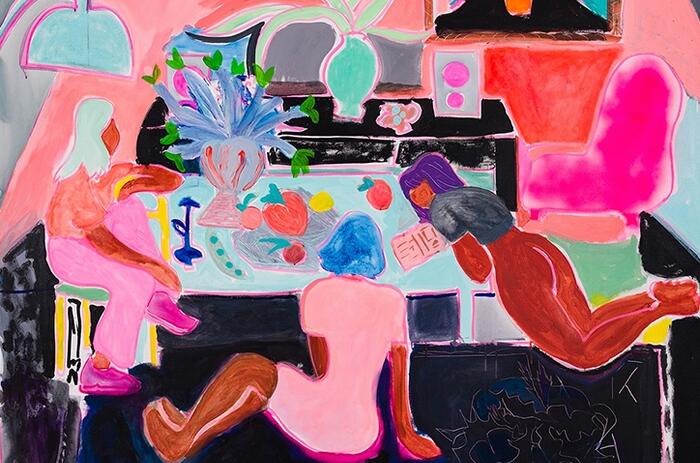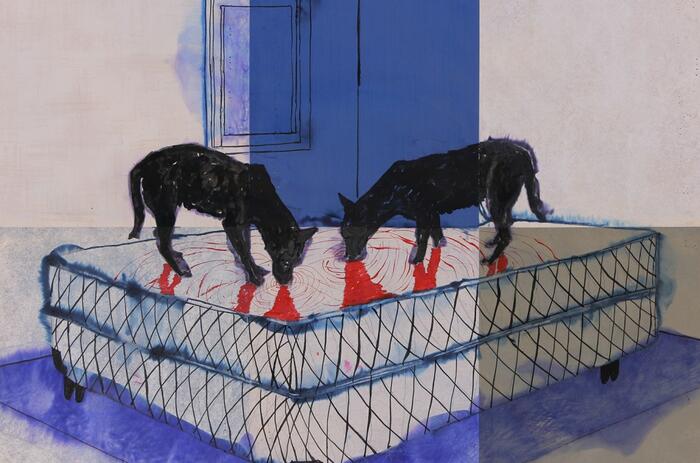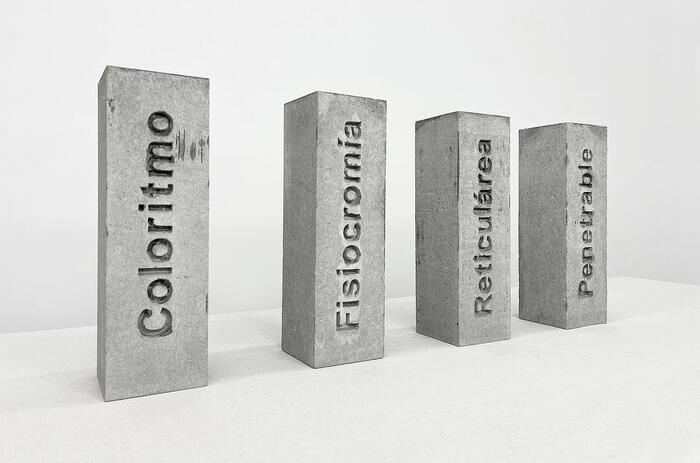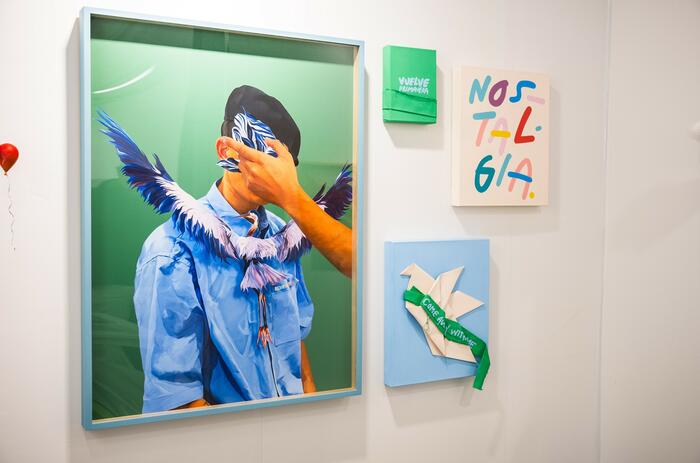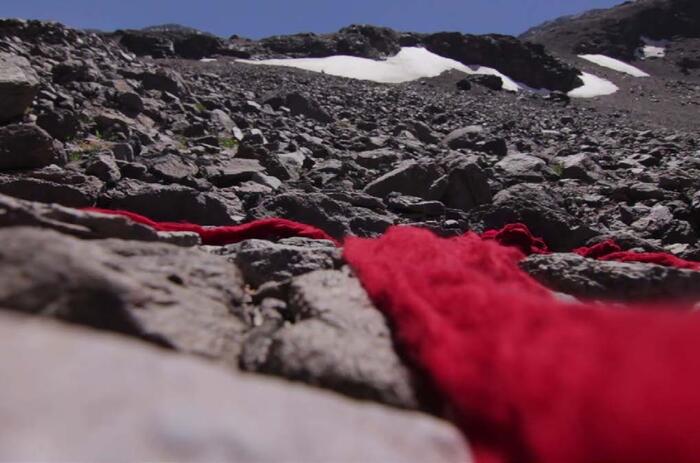MANOELA MEDEIROS ESCAPES ARTISTIC DEFINITIONS AND EXPLORES THE EVOLUTION OF THE NON-PLACE
In her practice, Brazilian artist Manoela Medeiros questions artistic media by going beyond their conventional formats, producing paintings and in situ installations that explore the relationships between space, time, and the corporeality of art and of the viewer. Together with Felipe Cohen, they are part of Kubik Gallery’s proposal for Pinta Miami 2023.
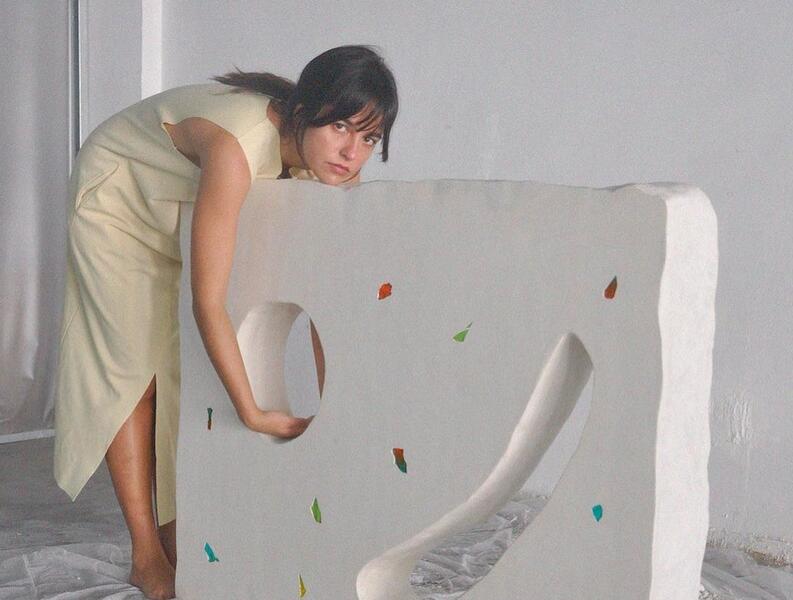
Your artistic practice encompasses sculpture, painting, performance and installation. How would you describe your artistic approach and what are the main influences that have shaped your work?
Work is never just one medium, when I make a painting, it could also be a sculpture or an installation. Does an in-situ intervention seem like it is part of the architecture of the place or would it be the place that involves the intervention? This idea of not being able to define or categorize work enchants me. Always between two places, and also in no place. Always between two definitions and cannot be defined. This is the ruin. This non-place, neither home nor nature.
What motivates you to challenge the boundaries of artistic formats and media?
In the studio I am always attentive to the process and especially to “error” and chance, it is through these experiments that I come across and discover new things. The most important thing for me about being an artist is being free to always experiment.
In your work, you explore the relationships between language, nature and ruins. What drives you to address these themes and how do they relate to each other in your work?
Ruin for me is the metaphor of a non-place that is always changing. A time in suspension, which is no longer a house once built by man nor a forest overgrown with vegetation. I try not to think or represent these metaphors literally. But rather reproduce the process by which they are formed, using the same materials, etc. For example, accumulating layers and layers on canvas and then excavating them like a wall of a ruin.
Many of your artistic interventions involve direct interventions in the exhibition space. How do you decide what kind of intervention to make and how does your work interact with the specific environment? How do you think this exploration of temporality contributes to the viewer's experience?
The presence of a body that observes the space is essential for interventions. In general, I try to intervene in the first element that caught my attention the first time I visit a space. Be it a window, a corner, a light that comes through a crack.
I like the idea that when an observer enters an exhibition space, they almost see no separation between what is a work of art and what is space. Space and work intertwine and complement each other.
How do you see your artistic practice evolving in the coming years? Is there a central axis that sets the pace for you or is it more of a free search?
There is always a common thread and one works leads to another. As I spend a lot of time in the studio experimenting, I like to think that many works come at random, in other words, the hand seems to know what to do before the mind.
Does your approach change as you work in different spaces and cultural environments, such as Rio de Janeiro and Paris? Why?
Yes, the work of art for me is a living thing and always in motion. It will be interfered both by climatic conditions and materials available in that environment, as well as cultural elements. Work being influenced by the environment is an important sign of listening. It is important to listen to your surroundings.
Pinta Miami: Within all your trajectory, search and vision, how do you place your proposal together with Kubik Gallery in Pinta Miami 2023? How do your work dialogues with Felipe Cohen's?
This year I did the residency at Fountainhead in Miami and was able to experience a little of the city and culture in Miami. I was completely enveloped by the city's weather conditions (it was August) and its exuberant nature. We (the artist together with Felipe Cohen) talk about space-time but in a very different way that I believe they complement each other.

